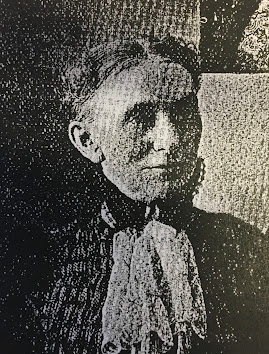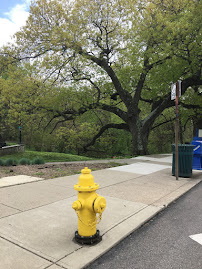Cedar River, Mich.
Dear George,
Some of our most memorable
times in childhood occurred when our parents took us on family outings to Jean
Worth’s hunting camp near Cedar River in Menominee County. I don’t know exactly how large the
Worth property was, but I think it was at least several hundred acres, and the
camp cabin, constructed of huge logs, probably dated back to the late
1800’s. The camp was right on the
edge of the Cedar River, a 67-mile tributary which runs through the county and
empties into Green Bay. The
property included the most primeval evergreen forest I’ve seen in the region. Jean and Margaret Worth and their
daughters, Dooley, Jean, and Ann, lived in Menominee, where Jean was the editor
of the Herald-Leader, but they
spent lots of leisure time at their Cedar River camp. When we visited, it was usually along with other family
friends, e.g., Worths, O’Hara’s, Caleys, Jacobsens, Burkes, Sargents, St. Peters,
and many others. The adults would
socialize at the cabin, while the kids went off for adventures in the cedar
forest. My father brought our boy
scout troop here for overnight camping, and later on dads in the group brought
their teenage sons to camp for deer-hunting expeditions. These were exciting
outings, even though none of us wound up with a deer. After Katja and I were married, we’d drive up to Cedar River
with my parents and have delicious burgers at Paddy’s Bar (now the Lighthouse
Inn). I’ve enjoyed compiling some
of the history of Cedar River (see sources at end). Here’s what I’ve learned.
Cedar River (1911)
The
village of Cedar River is located on M-35 along the Green Bay shore about 25
miles north of Menominee and 32 miles south of Escanaba. Originally settled in 1850, it's the
oldest settlement on the U.P.'s bay shore. Its first name was Cedar Forks, referring to the point where
the Cedar River emptied into Green Bay.
The town was also called Cedarville at one point, named after the great
stands of cedar trees in the area.
The local post office opened on Feb. 27, 1852, with Edwin S. Briggs as
the first postmaster. A
water-powered saw mill was built in 1854 on the Big Cedar River about 2 mines
upriver from its mouth, and this is where the original settlement of Cedar
Forks was located. The Cedar River
cemetery is still there today. The
mill was sold to Sylvester Lynn and Samuel Hamilton, but they abandoned it and
built a new steam mill at the mouth of the river, today’s location of the
village of Cedar River. About 300
people lived in Cedar River when the lumber industry was at its peak in the
1890's. The town’s name was
changed to Cedar River on May 9, 1883.
A
Load of Supplies at Cedar River (1910)
Cedar
River was a company town, and the lumber company, which Jesse Spalding acquired
in 1862 and later sold to Samuel Crawford & Sons, owned most of the
property. The community included
hotels, general stores, commercial fishing, and agriculture. The company store was supposed to be
the principal merchant, but an enterprising businessman named Jake Rosenberg
set up a competing general store on the south side of town. Lumber was processed at the sawmill,
then shipped by schooner to Chicago.
Crawford & Sons cut 16 million feet of lumber and 14 million
shingles in 1910, worth about $235,000.
The major harvest was of hemlock, tamarack, and white pine, but also
included white cedar, basswood, elm, ash, maple, birch, and spruce. In 1871 many of Cedar River's lumber
camps were destroyed by the Peshtigo Fire. The sawmill burned in 1912, was rebuilt, and burned again in
1920. It wasn't replaced the
second time around. Remnants of
the lumber mill can still be seen on the north side of the Cedar River.
U.S.
Lighthouse, Cedar River
The
mouth of the Cedar River offered the best harbor on Green Bay's west coast, and
in 1888 Congress appropriated $25,000 for the construction of a lighthouse
there. The lighthouse consisted of
a 38-foot, white-painted wooden tower.
In addition, a two-story, six-room keeper's dwelling was constructed in
1890 on a one-acre property donated by Jesse Spalding. Gustavus Umberham was in charge of the
lighthouse from 1890 to 1901, and then Nelson Knudsen took over. Though the lighthouse is long gone, the
old lighthouse keeper's house remains to the south of the community.
Churches
on M-35, Cedar River
Early
inhabitants hoped that Cedar River would get a railroad, but the lumber company
chose to use a steam hauler instead for transporting logs. As the forests became depleted and
lumbering declined in the first decade of the 1900's, most of the residents
eventually moved away. Today only
a couple dozen people are permanent residents of Cedar River. Two churches still remain from Cedar
River's lumbering days: the Catholic Church of the Sacred Heart (1887) and the
Mission Chapel (1889). Today Cedar
River serves as a popular fishing and vacation resort community. The river is stocked with trout, and
walleye, salmon, brown trout, and smallmouth bass are plentiful in the
bay. The Cedar River State Harbor
offers seasonal slips, and the Cedar River State Forest Campground has sites
for tents and small trailers.
Lighthouse
Pub, Cedar River (formerly Paddy’s)
Katja
and I usually stop for lunch in Cedar River when we visit Menominee. The burgers are still great, and our
visit brings back many happy memories.
Love,
Dave
SOURCES:
"Cedar
River," www.hunts-upguide.com;
"Cedar
River," www.uphiddencoast.com;
"Cedar
River, MI," www.lighthousefriends.com;
"Heritage
of the Route," www.cuppad.org;
"History
of the Northern Peninsula of Michigan," www.files.usgwarchives.net;
"Michigan Place
Names," www.books.google.com;
"Seeing the Light,"
www.terrypepper.com
G-mail Comments
-Barbara S-K
(3-7): I hope you are recuperating
from your broken ribs. Isn't it amazing how much damage a little sidewalk
crack can cause? Loved your article on Cedar River. As the Sawyer
cabin was 7 miles from Cedar River, we also spent a LOT of time there.
Whether drinking, eating, fishing or vittles from Anderson's
"grocery" store, we called it our second "hometown."
Many good folks have passed through those doors over the years. Up to her
death, my mother loved the more recent "Cedar River Bridge Walk" on
Labor Days…





.JPG)









































































































































































Just catching up with Letters for George. David, don't you think the once-upon-a-time annual Cedar River Bridge Walk with Pat DeGaynor leading in his kilt and playing the bagpipes deserved a mention? Come to think of it,that event was probably not referenced in any of your sources.
ReplyDeleteI wish I'd been there for that wonderful sight.
DeleteThank you for your knowledge of the village of Cedar River. An ancestor, George Harkins, died and was buried there in 1911. He was a sailor by trade. A reference to the schooner "Venture" was noted in his obituary, he was known for "spinning yarns of the sea." David
ReplyDelete